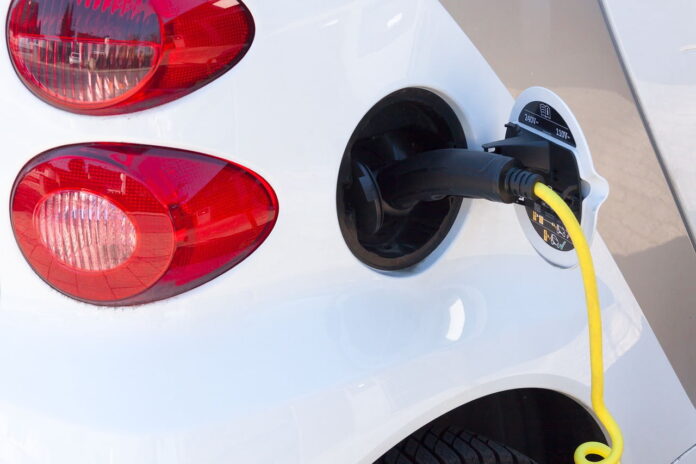In the global race towards a more sustainable future, small towns are often overlooked as the epicenters of change and innovation. Yet, it is within these tight-knit communities that a quiet revolution is taking root, one that could significantly alter the trajectory of our environmental impact. This revolution is the gradual shift towards electric mobility, a move that promises to redefine transportation in rural landscapes. As the world grapples with the urgent need to reduce carbon emissions, small towns are stepping up, demonstrating that size does not limit the capacity for impactful change.
The transition to electric vehicles (EVs) in these areas is not just about adopting new technology; it’s a cultural shift that intertwines with the values of community and conservation. Small towns are harnessing their unique strengths, such as shorter travel distances and a strong sense of community, to spearhead this transformation. The adoption of electric mobility in these regions is a testament to their resilience and willingness to innovate for the sake of a greener planet.
The Road to Change: How Small Towns Are Pioneering Electric Mobility
Small towns are uniquely positioned to lead the charge in electric mobility. With less congestion and shorter commutes, the adoption of EVs can be more straightforward than in sprawling urban centers. In these communities, local governments and citizens often work hand-in-hand to initiate change. For instance, some towns have begun to integrate electric vehicles into their municipal fleets, setting an example for residents and local businesses.
Grants and incentives at the state and federal levels are also playing a crucial role in this transition. These financial boosts help small towns overcome the initial cost barriers associated with electric vehicles and charging infrastructure. Moreover, community-driven initiatives, such as car-sharing programs and educational campaigns, are raising awareness and fostering a collective spirit towards sustainability.
Local businesses are also recognizing the benefits of electric mobility. By transitioning their service vehicles to electric models, they not only reduce their carbon footprint but also save on fuel and maintenance costs. This economic incentive, coupled with the desire to contribute to a cleaner environment, is propelling small towns forward on the road to change.
Charging Ahead: Building the Infrastructure for an Electric Future
The shift to electric mobility hinges on the availability of charging infrastructure. Small towns are creatively tackling this challenge by leveraging existing structures and public spaces. For example, some communities have installed charging stations at libraries, community centers, and public parking lots, making it convenient for residents to charge their vehicles.
Collaborations between local governments, businesses, and utility companies are crucial in expanding the charging network. These partnerships can lead to innovative solutions, such as integrating solar power to offset the energy demands of charging stations. Additionally, grant programs and tax incentives are available to support the installation of charging infrastructure, making it a more attainable goal for small towns.
The strategic placement of charging stations is also essential. By situating them along main thoroughfares and near popular destinations, small towns can ensure that both residents and visitors have access to charging options. This not only supports local EV owners but also encourages eco-friendly tourism, further boosting the local economy.
Overcoming Challenges: Addressing the Hurdles of Electric Vehicle Adoption in Rural Areas
Despite the enthusiasm for electric mobility, small towns face unique challenges that must be addressed. One of the primary concerns is the range anxiety associated with electric vehicles. In rural areas, where distances between destinations can be significant, ensuring that EVs can travel the necessary range is critical. To combat this, small towns are advocating for more advanced EV models with longer ranges and are working to increase the density of charging stations.
Another hurdle is the perception of electric vehicles as being too costly or technologically complex. Education plays a vital role in dispelling these myths. Local workshops, test drive events, and information sessions can help demystify EVs and showcase their benefits. Additionally, showcasing the total cost of ownership, which is often lower for EVs due to reduced fuel and maintenance costs, can sway public opinion.
Access to charging infrastructure for residents without private garages or driveways is another challenge. Innovative solutions, such as community charging hubs or shared charging stations at workplaces, can provide alternatives for these residents. By addressing these obstacles with practical and community-focused solutions, small towns can continue to lead the way in electric mobility adoption.
The Ripple Effect: How Small Towns’ Shift to Electric Mobility Impacts the Larger Environmental Picture
The collective actions of small towns adopting electric mobility have a profound impact on the larger environmental picture. Each electric vehicle on the road contributes to a reduction in greenhouse gas emissions, leading to improved air quality and a decrease in pollution-related health issues. As more small towns join the movement, the cumulative effect on the environment can be significant.
Furthermore, the shift to electric mobility in small towns can inspire larger cities and regions to follow suit. The success stories and lessons learned from these pioneering communities provide valuable blueprints for broader implementation. The ripple effect extends beyond borders, as small towns become part of a global network of communities committed to sustainable transportation.
The transition to electric mobility also stimulates local economies by creating new job opportunities in EV maintenance and charging infrastructure development. This economic growth, combined with environmental benefits, positions small towns as leaders in the movement towards a greener future.
Small towns are proving that change doesn’t always have to start in big cities. Through innovation, collaboration, and community spirit, these humble communities are embracing electric mobility and paving the way for a more sustainable world. Their actions serve as a beacon of hope and a reminder that every step towards a greener future, no matter how small, is a step in the right direction.
